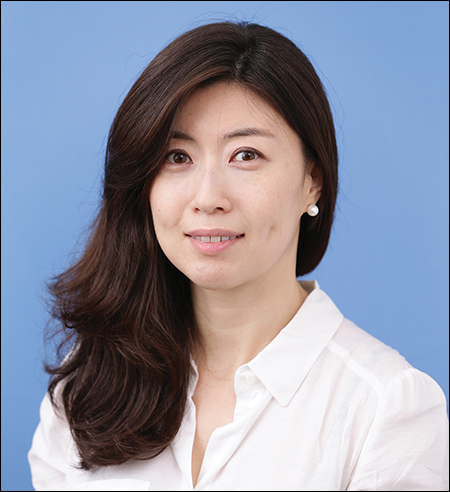
Sunny Um
With Asia toppling the US as the largest consumer of make-up, what is driving colour cosmetic sales in the region?
Sunny Um is a Senior Analyst for Beauty and Fashion at Euromonitor International. She focuses on social megatrends' impacts on consumer behaviour, product development and retail sales in Asia.
Asia generates 29% of global colour cosmetics value sales, overtaking North America in 2017.
With the fastest growth registered that year (and forecast to 2022), Asia is expected to remain the powerhouse behind global sales, driven by its huge population, ongoing economic expansion and consumers' increasing budgets and desire for 'vanity spending'.
The region holds ample room for growth, as its per capita spend on colour cosmetics hasn't even reached half of that of North America or Western Europe.
In terms of product sales, lip make-up is Asia's bestseller, followed by foundations/ concealers. The explosion of SNS culture, selfie syndrome, contouring techniques and shade personalisation is driving strong sales of lipsticks and foundations.
BB/CC creams registered the fastest growth among all colour cosmetics, but the products are unlikely to cannibalise foundations since consumers now buy those for different TPO (time, place or occasion).
In addition, the contouring trend encourages consumers to buy more than one foundation and mix and match.
While premium in the past simply meant high prices and brand names, it now represents consumers' pursuit of exclusive, personal product experiences. People are less loyal to brands and demand 'wow' factors beyond generic cosmetic function.
Skin care-infused cosmetics, which contain natural extracts to provide skin brightening and coverage together, are also under the spotlight.
Premiumisation is strongly kicking off in developing markets in Asia, according to Euromonitor's 2017 Beauty Survey.
While 40-50% of millennials in Southeast Asia, such as Thailand and Indonesia, still prefer to 'buy with the same brands/products', the response rate percentage has declined by 10% since 2015 and more respondents chose to 'buy different or new brands/products'.
In beauty innovation hotbeds China and South Korea, the majority of respondents are already exploring different brands and products.
When asked for the top five desired benefits in colour cosmetics, responses from China, Thailand and Indonesia show 'premium' and 'good for skin' demands, as well as 'hypoallergenic', 'suits my skin concerns' and 'natural or organic', whereas those in Japan and South Korea prioritise 'value for money' and 'low price'.
E-tail and subscription boxes are effective tools for men's make-up marketing
The launch of Chanel's first men's make-up line, Boy de Chanel, reaffirms that men are fast-growing as a legitimate customer base in colour cosmetics.
In the 2017 Beauty Survey, when asked about obstacles to foundation use, 30% of Asian millennials responded that a 'men-specific version is not available'. The 30% response rate is a huge jump from almost 0% in the 2015 survey.
E-commerce and subscription boxes are effective tools for men's make-up marketing, as they fit the no-prolonged-browsing and fast transactions that men prefer when shopping.
Through these tools, brand owners can educate men about how to use make-up and promote various products in a single package.
On a different theme, Japan, South Korea, China and Thailand – the four major beauty giants in Asia – are already ageing societies.
Globally, consumer-driven active ageing advocacy is vibrant, but this trend is rather slower in Asia, as female baby boomers in the region are more conscious about age.
According to 2017 Beauty Survey, when asked about obstacles to using foundation or lipstick, the women responded that they were 'not appropriate for my age' at a higher rate than those in Europe, the Americas or the Middle East and Africa.

The social pressure on older women to tone down their look and behaviour makes them lose interest in colour cosmetics.
However, brand owners can change such stereotypical mindsets by educating them with diverse make-up tactics and products.
Popular products will be lip volumisers and lip liners to add volume and definition, and lightweight foundations and cream blushers for less caking and younger-looking complexions.
Up to 2022, the colour cosmetics category in Asia is expected to expand at 6% CAGR, reaching US$25bn.
While sales growth in developing markets will be driven by increasing GDP per capita and shopping budgets, Hong Kong sales will exhibit high growth among the mature markets, thanks to the upcoming Hong Kong-Zhuhai-Macau bridge and the Hong Kong- China high-speed railway.
New shopping malls and duty free concessions around these areas will bring in more Chinese shoppers, especially day-trippers.
